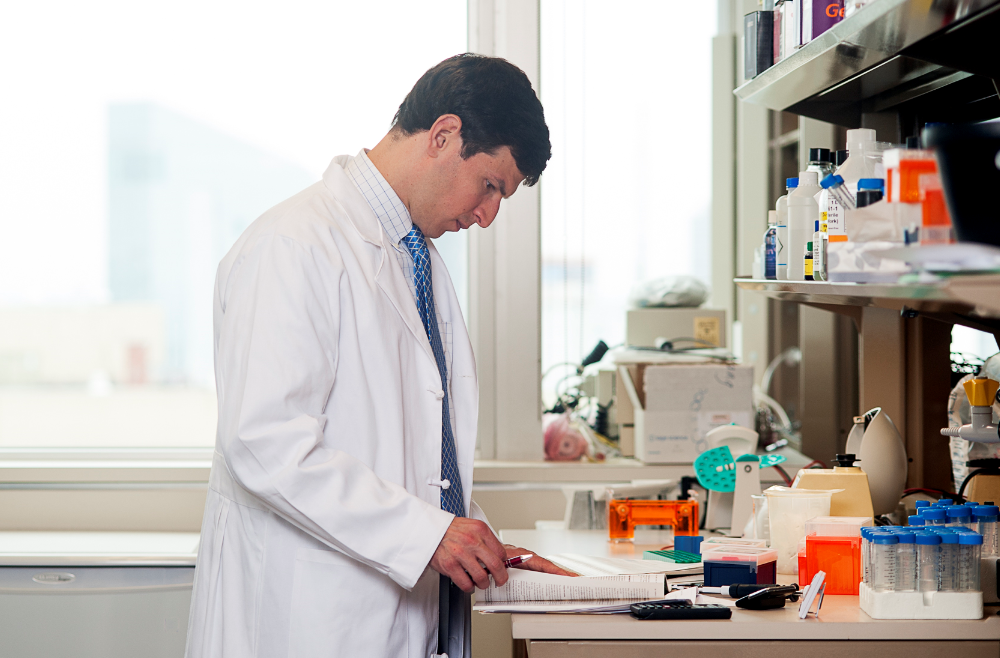
PHILADELPHIA — David C. Fajgenbaum, MD, MBA, MSc, an assistant professor of Translational Medicine & Human Genetics and director of the Center for Cytokine Storm Treatment & Laboratory at the Perelman School of Medicine at the University of Pennsylvania, was awarded $1 million by the Parker Institute for Cancer Immunotherapy (PICI) to expand the scope of the COvid19 Registry of Off-label & New Agents (CORONA) project and build out his team to accelerate treatment identification for COVID-19.
"For the last year, over 100 volunteers and members of my lab have worked on nights and weekends to extract and centralize data for CORONA which has been used to identify and advance the most promising treatments for COVID-19," Fajgenbaum said. "With this grant from PICI, we can build out our team to integrate and analyze data with the effort and urgency that this global pandemic warrants."
CORONA is the world's largest database of COVID-19 treatments, covering 400+ treatments that have been reported to be administered to 340,000+ patients, helping researchers to identify and prioritize promising treatments for well-designed clinical trials and to inform patient care. With funding from PICI, several new tools are in development or have already been built, including an open-access dashboard that harmonizes data between studies and presents vital data points for prioritizing promising treatments, such as the number of randomized control trials that have been completed, the number that are open, the number that achieved their primary endpoint, and others.
"All of the really relevant and important data is listed right next to each COVID-19 drug and kept up to date," Fajgenbaum said. "Given the hundreds of drugs that have been tested in the last year, the tens of thousands of published studies about them, and the global importance of finding truly effective treatments, we had to build a central tool like this. We can't afford to let a promising treatment fall through the cracks."
Fortunately, CORONA has been accessed by over 20,000 users and has served as a critical dataset for the Food and Drug Administration (FDA) and National Institutes of Health (NIH). In fact, Fajgenbaum was recently selected to serve on the NIH's ACTIV-6 team to select the most promising COVID-19 treatments for a large randomized controlled trial. He is also leading a similar effort for the CURE Drug Repurposing Collaboratory, a public-private partnership between the FDA, NIH, and Critical Path Institute. During the COVID-19 pandemic, Fajgenbaum also contributed to establishing a unifying definition for cytokine storm, the most deadly manifestation of COVID-19, and uncovered new mechanisms that can be involved in cytokine storm.
Additional members of the lab and volunteers on the effort include Sheila Pierson, Johnson Khor, Alexis Phillips, Amber Cohen, Ania Korsunska, and Matt Chadsey.
This process of drug discovery is also very personal to Fajgenbaum and his team. Using a similar approach to CORONA, they have discovered multiple promising treatment approaches for Castleman disease, which Fajgenbaum also battles as a patient, and even used one of those treatments to induce an extended remission for Fajgenbaum.
The Center for Cytokine Storm Treatment & Laboratory is looking to fill seven new positions with responsibilities varying from data coordination and computational biology to leadership and strategy. Job descriptions can be found here.
The CORONA project currently has seed funding for one year and is actively seeking additional financial support. While they hope that they can contribute to accelerating the end of this pandemic within that timeframe, they also hope to turn this tool for COVID-19 into a platform for drug discovery and repurposing beyond COVID-19.






